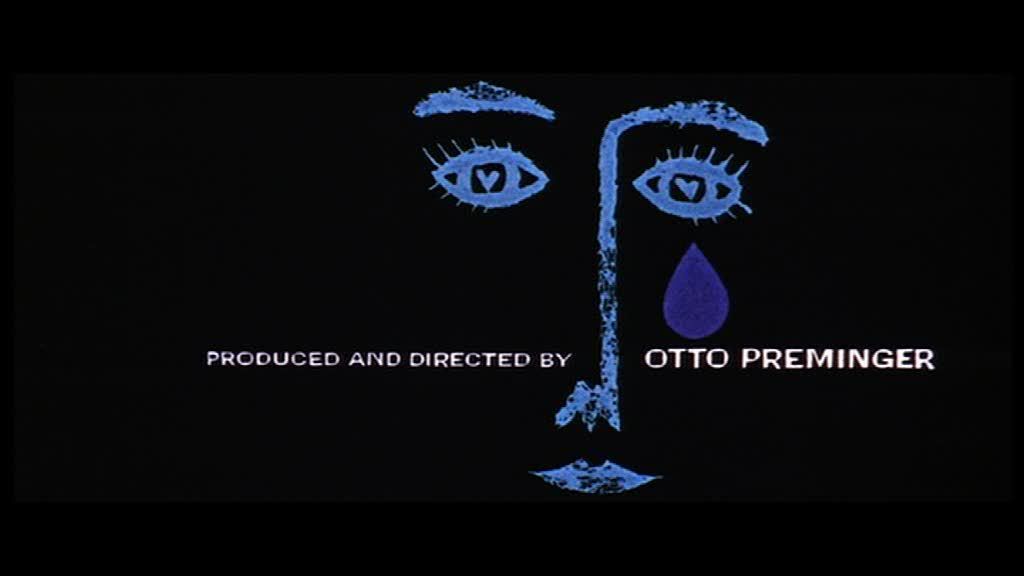
Bonjour Tristesse is, like many of Otto Preminger's films, an extended exercise in toying with the problems of audience identification and tone. The film shifts, in its first ten minutes, from a somber black and white prologue in which Cecile (Jean Seberg) and her father Raymond (David Niven) seem subtly discontented in their upper-crust lifestyle, to a gorgeous Technicolor flashback in which everything is breezy, carefree, and fun for the pair and Raymond's latest fling Elsa (Mylène Demongeot). Preminger injects the color into the film slowly, fading in some blue ocean waves over Cecile's shoulder as she dances, then irising out from the center of the image with a burst of color. The shift to Technicolor highlights the contrast between the two Ceciles we see, one numb and disconnected, the other vibrant and almost relentlessly sunny. The film tracks Cecile's downfall as her father abandons his carefree ways to marry the matriarchal Anne (Deborah Kerr), who immediately assumes a domineering, motherly attitude towards the defiantly flighty Cecile. Preminger's brilliance lies in the way he gets the audience irrevocably on Cecile's side — it's hard not to love Seberg's smiley, unrestrained performance and to sympathize with her desire for freedom — only to pull the rug out as he delves more and more into the selfish, willful, and vengeful aspects of this charming girl's personality. The film remains ambiguous, right up to its final black and white closeup of Seberg's agonized face, as to whether Anne or Cecile is the real victim in this battle of wills.
As always, Preminger's direction is fascinating, his distinctive roving camera framing and reframing the characters in various couplings and trios, emphasizing Anne's intrusion on Cecile's carefree life by placing her in dominant positions within the frame, always looming over the younger girl. And yet Preminger hardly makes her an unredeemed "evil stepmother" character, infusing her with unexpected pathos while Kerr plays her as a complex, well-meaning woman who is simply ill-suited to the morally loose, privileged existence enjoyed by Cecile and Raymond. The film also provides a dazzling showcase for Seberg in her second role, which Preminger conceived as a comeback attempt after she was roundly mocked for her debut in his Saint Joan the year before. The American critics mostly didn't bite this time either, but Seberg's wide-eyed naivete and cheerful bombast made her a curiously effective Joan of Arc, and an even better Cecile. Of course, at least some French critics caught on to what Preminger and Seberg are up to here, and her performance in Bonjour Tristesse directly brought the young actress to the attention of Jean-Luc Godard, who immediately cast her in his own debut feature. Godard picked up on the film's purposeful tonal ambivalence and Seberg's deftness in conveying a character who is at once charming and ruthless. He famously said that Seberg's Patricia in Breathless was a continuation of Cecile's arc: "I could have taken the last shot of Preminger's film and started after dissolving to a title, 'Three Years Later.'"


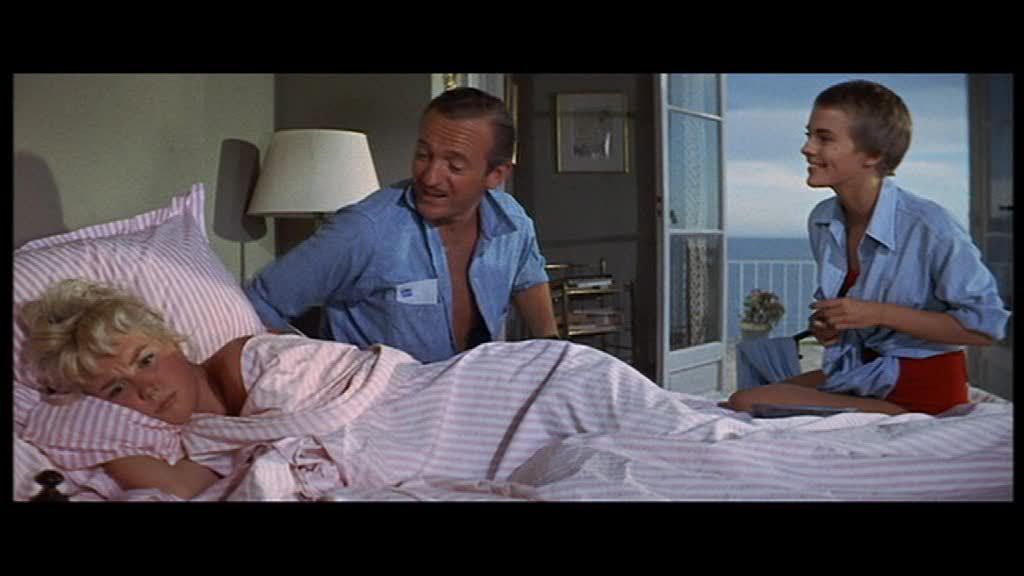
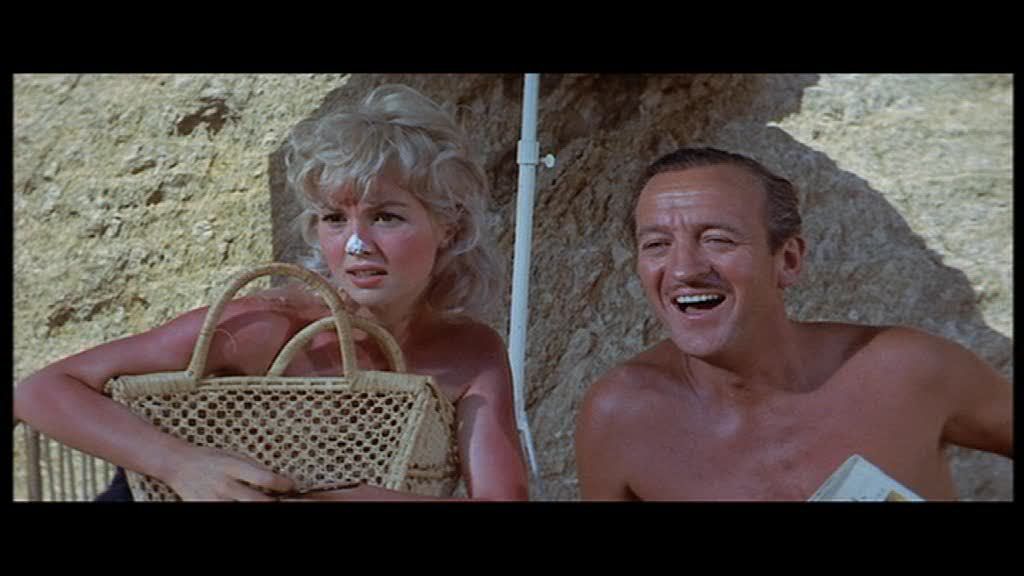
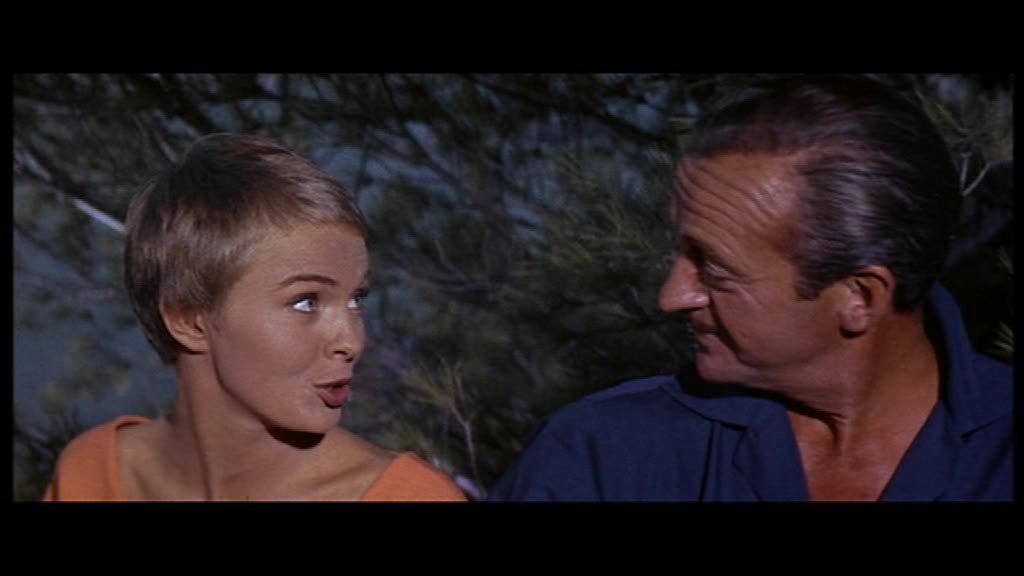



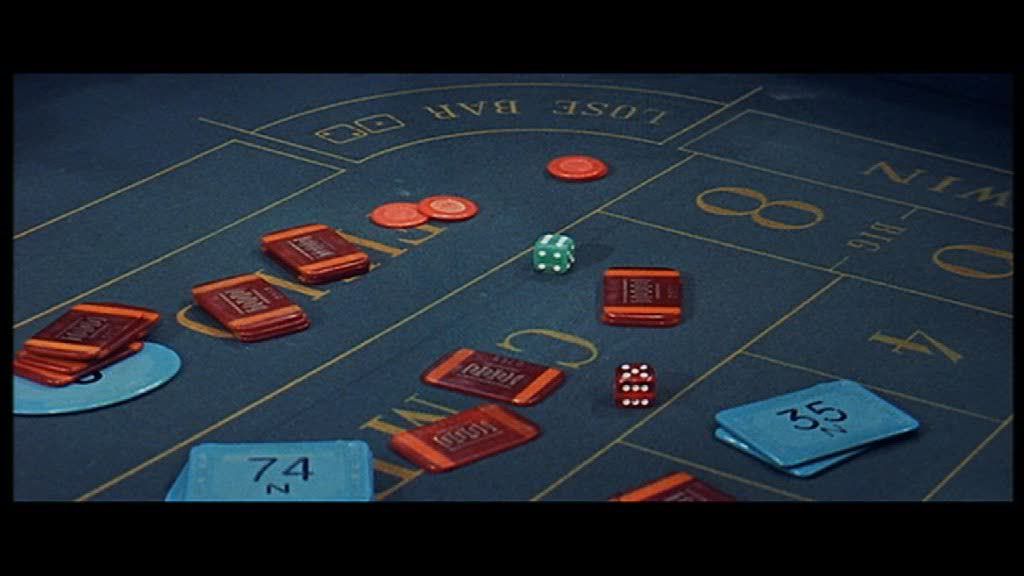
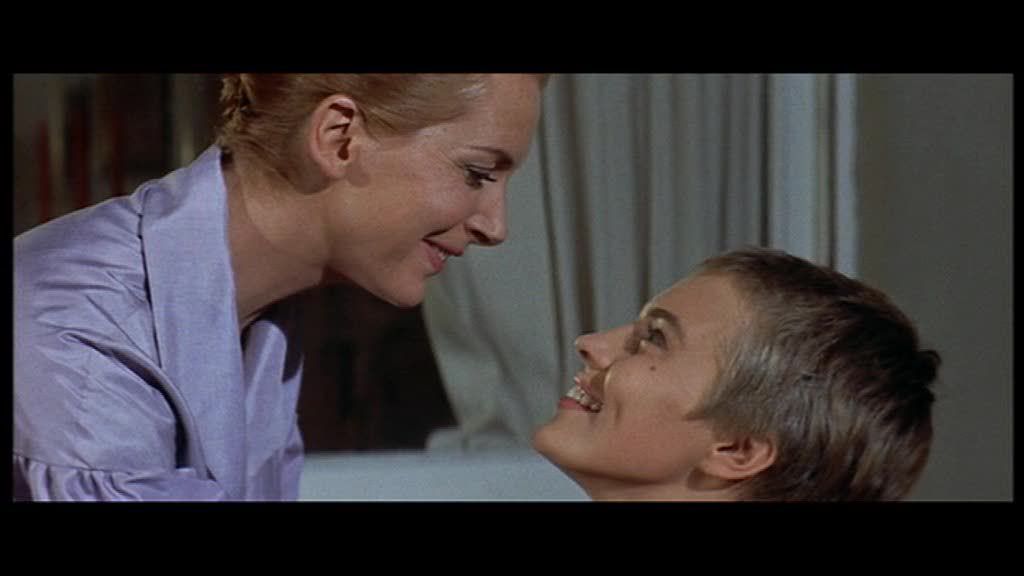

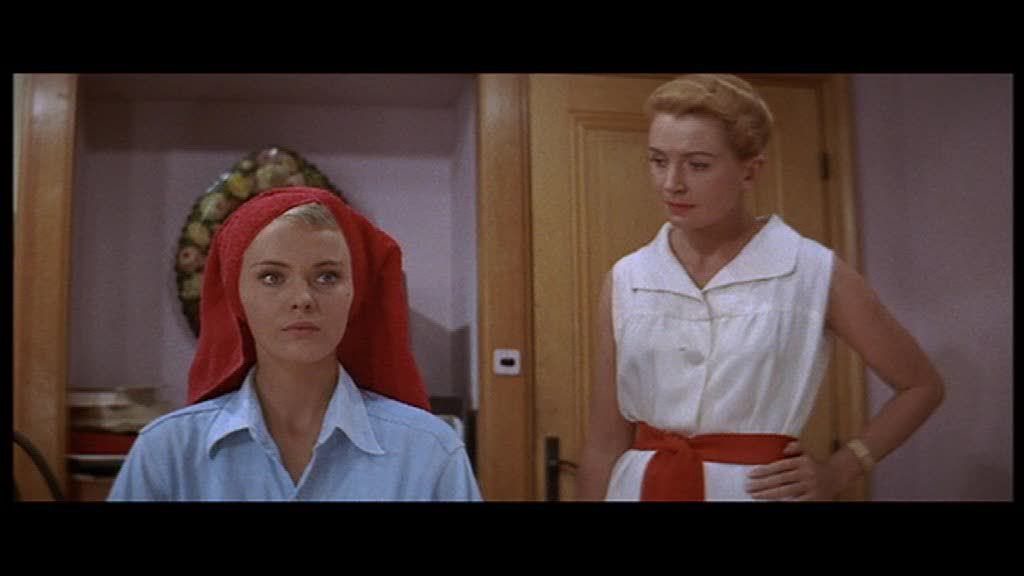
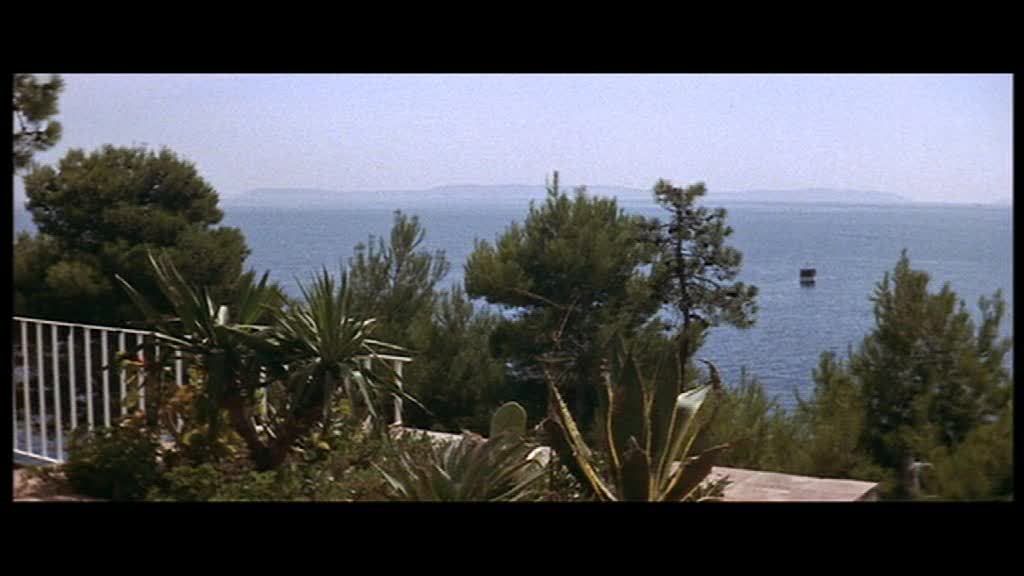
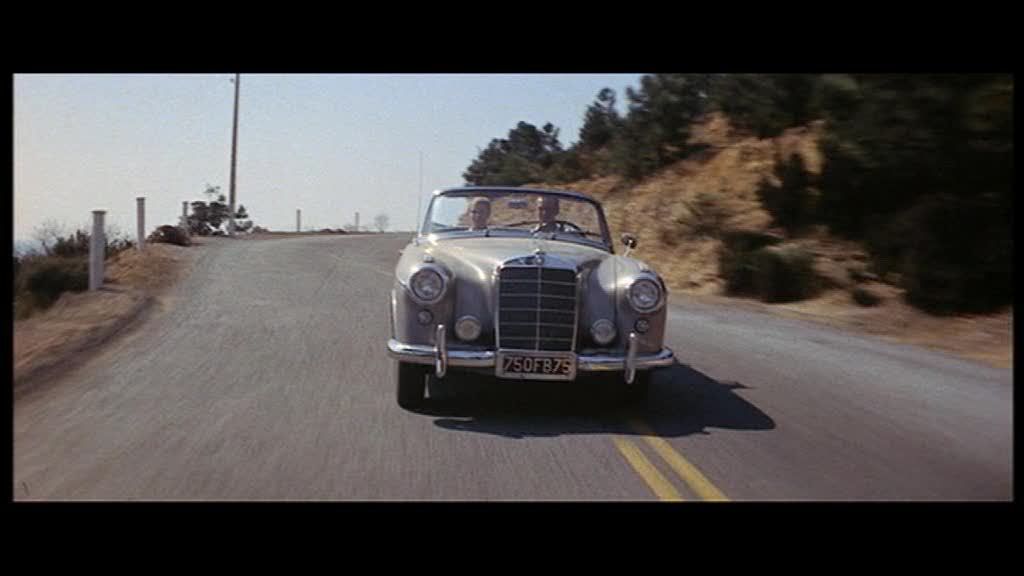


5 comments:
This is one of my very favorite premingers and a grand showcase for his late style. Ambiguity abounds. Niven and Seberg seem almost incestuous. Prenger brings it right up to the edge then stops -- as if daring the audience to demand he cross the line. Kerr is magnificent -- alternately hysterically clueless, calmly wise and finally sadly pathetic. And Seberg plays the cinema's first true modern anti-heroine.
Interestinly Arthur Laurents penned the screenplay.
One of my favorites too, obviously, and I'm a big Preminger admirer in general. The incest subtext was apparently much more on the surface in the Francoise Sagan novel on which this is based; the screenplay toned down this aspect considerably, though it still comes across in a more subtle way. Seberg is great in this, I'll never understand why she got so much flak for this and Saint Joan -- I can't imagine her parts being played by any more conventional actress, it'd be way too stiff.
The toning down, at least on the narrative and dialogue level, is perfectly OK bhecause Niven and Seberg are in no way shape or form an ordinary father and daughter. He's an experienced seducer of women and she has been along for the ride to observe -- and obviously learn -- from the start. Never has jadedness seemed more cheekily alluring. It's almost Les Liasons Dangereuses von en bateau
This is an extraordinary review, but then again everything you write is extraordinary! LOL!
I have just ordered the Region 2 (price slashed) of this film from Amazon.UK. I have seen nearly all of Preminger, but inexplicably not this one, despite the cahirs love and now this glowing appraisal from Mr. Howard.
That reference point of comparison to the Rivette masterpiece by Mr. Ehrenstein is yet another stellar selling-point.
Several reviewers have brought up this suggestion of incest but I cannot think of anything in book or film
that points to it. it seems to me more a figment of stretched imagination in the eyes of the beholder.
True father and daughter have perhaps an unusual relationship based more on frankness than anything else.
They are close and appreciatively friendly. To me that's as far as it goes.
Some people delve into the lives of film and book characters beyond what is up there or in there.
I suppose that is fine on a personal level but the rest of us don't need to buy it.
Post a Comment